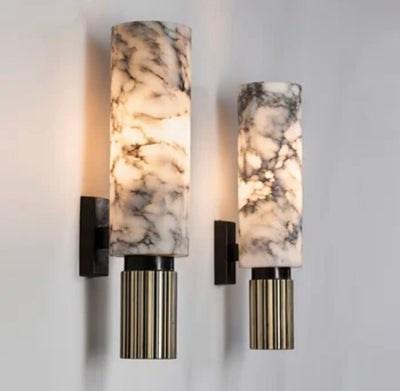Adding garden lights can transform your outdoor space, enhancing its beauty and functionality after the sun sets.
Whether you’re lighting a pathway, accentuating a feature, or creating ambiance for evening gatherings, understanding key aspects before you install outdoor lighting is crucial for a successful project.
Before starting any electrical work, ensure you turn off the power at the circuit breaker to maintain safety. Additionally, it is important to obtain an electrical installation certificate for new circuits to ensure compliance with safety standards.
In this guide, Light Trend will walk you through the step-by-step process to install garden lights and illuminate your outdoor area effectively.
Why install garden lights?
Garden lighting installations not only enhance the aesthetic appeal of your outdoor space but also provide practical benefits:
- Safety: Illuminate pathways and stairs to prevent accidents in low-light conditions.
- Security: Deter intruders with well-lit exteriors.
- Ambiance: Create a warm, inviting atmosphere for outdoor entertaining.
- Highlighting features: Showcase plants, trees, or architectural elements in your garden.
Installing outdoor lighting is a straightforward way to enhance ambiance and security in outdoor spaces.
When installing lights, consider various methods such as professional assistance for hardwired installations or simpler options like solar or low voltage landscape lighting.

Buy nordic outdoor wall light sticks
Tools and materials you’ll need
Before starting, gather the following tools and materials:
- Garden lights (LEDs are recommended for energy efficiency)
- Light fittings
- Low-voltage transformer (if required)
- Outdoor-grade electrical cable
- Cable connectors or waterproof junction boxes
- Wire connectors
- Timer or smart control system (optional)
- Shovel or trowel
- Screwdriver
- Wire cutters/strippers
Safety precautions for garden lighting installation
When installing garden lighting, safety should always be your top priority. Here are some essential safety precautions to keep in mind to ensure a smooth and secure installation process:
- Turn off the power: Always switch off the power to the circuit at the main electrical panel before starting any work. This step is crucial to prevent electrical shock.
- Verify with a voltage tester: Use a non-contact voltage tester to double-check that the circuit is safe to work on. This tool helps you confirm that no live electricity is present.
- Wear protective gear: Equip yourself with gloves and safety glasses when handling electrical components. This protective gear shields you from potential hazards.
- Avoid wet conditions: Steer clear of working in wet or damp conditions, as moisture increases the risk of electrical shock. Wait for dry weather to proceed with your garden lighting installation.
- Use ladders safely: If you need to use a ladder or step stool, ensure it is placed on a firm, level surface. Always maintain three points of contact (two hands and one foot, or two feet and one hand) to prevent falls.
- Handle components carefully: Never touch electrical components with your bare hands. The oils from your skin can damage sensitive parts, so use tools or wear gloves.
- Keep the area clear: Ensure children and pets are kept away from the work area to avoid accidents and distractions.
By following these safety precautions, you can minimise the risk of injury or electrical shock when installing garden lighting.
Prioritising safety ensures a successful and worry-free outdoor lighting installation.
Step-by-step guide to outdoor lighting installation
1. Plan your layout
Begin by deciding where to place the outdoor lights. Identify the areas you want to illuminate, such as pathways, garden beds, or decorative features.
Selecting the correct outdoor light fitting and suitable bulbs is crucial for optimal performance.
Use a sketch or marker to plan the positioning, keeping in mind the distance between the power source and the lights.

2. Choose the right low voltage light fittings
When it comes to selecting low voltage light fittings for your outdoor lighting installation, there are several factors to consider.
Here are some tips to help you choose the right ones:
- Check the IP rating: Make sure the light fittings you choose have the correct IP (Ingress Protection) rating for outdoor use. IP ratings indicate the level of protection against solid objects and water. For outdoor lighting, you’ll want to look for fittings with a high IP rating, such as IP65 or higher, to ensure they can withstand the elements.
- Consider the lumen output: Choose light fittings that provide the right amount of light for your needs. Lumen output measures the brightness of a light source. For outdoor lighting, you’ll want to choose fittings with a high lumen output to ensure adequate illumination for pathways, garden beds, or decorative features.
- Think about the colour temperature: Color temperature refers to the warmth or coolness of the light. Warm white light (2700K-3000K) is often used for ambient lighting, creating a cozy and inviting atmosphere. In contrast, cool white light (3500K-5000K) is better suited for task lighting, providing a brighter and more focused illumination.
- Check the voltage: Make sure the light fittings you choose are compatible with your low voltage outdoor lighting system. Most low voltage systems operate at 12V or 24V. Using the correct voltage ensures the longevity and efficiency of your garden lights.
- Look for durable materials: Outdoor light fittings are exposed to the elements, so it’s essential to choose fittings made from durable materials that can withstand wind, rain, and extreme temperatures. Materials like stainless steel, aluminum, and high-quality plastics are excellent choices for outdoor light fittings.
- Consider the style and design: Choose light fittings that fit with your outdoor decor and style. There are many different styles and designs available, from modern and sleek to traditional and ornate. Selecting the right design can enhance the overall aesthetic of your garden.
Some popular types of low voltage light fittings for outdoor use include:
- Wall lights: These are mounted on walls and provide directional lighting, perfect for illuminating entryways or highlighting architectural features.
- Ground lights: These are mounted in the ground and provide uplighting or downlighting, ideal for accentuating plants, trees, or garden sculptures.
- Solar lights: These are powered by solar panels and are a great option for areas with limited access to electricity. They are eco-friendly and easy to install.
- String lights: These are a series of lights connected by a cable and are often used to create a festive atmosphere, perfect for outdoor gatherings and parties.
Remember to always follow local building regulations and safety guidelines when installing outdoor lighting.
It’s also a good idea to consult with a qualified electrician if you’re unsure about any aspect of the installation process.
This ensures your garden lighting installations are safe, efficient, and compliant with all necessary standards.
2. Choose the right low voltage light fittings
Select garden lights that suit your needs and design preferences. Options include:
- Pathway lights: Ideal for walkways and driveways.
- Spotlights: Highlight specific plants or features.
- String lights: Perfect for creating a festive ambiance.
- Floodlights: Provide broader illumination for larger areas.
Ensure the lights are rated for outdoor use and weather-resistant.

Buy outdoor LED garden ball light
3. Prepare the power source
For most garden lights, you’ll need an outdoor power outlet and a low-voltage transformer. The transformer converts standard electricity to a safer, lower voltage for outdoor lighting systems.
It is crucial to use the correct transformer for low voltage light fittings based on the load and wattage to ensure optimal performance. Install the transformer near the outlet, ensuring it is weatherproof and secure.
Additionally, to prevent voltage drop, especially over long cable runs, use suitable cable gauges to maintain optimal performance.
4. Lay the cables
Run the outdoor-grade electrical cable from the transformer to the light fixtures. Dig shallow trenches (2-4 inches deep) along the planned path to conceal and protect the cables.
Avoid areas prone to heavy traffic or digging.
5. Connect the lights using wire connectors
Attach the garden light fixture to the cable using waterproof wire connectors or junction boxes.
Follow the manufacturer’s instructions to ensure a secure connection. Check that each light is properly aligned and positioned before securing it in place.
6. Test the system
Before burying the cables, test the lighting system by powering it on. Confirm all lights are functioning correctly and adjust their angles as needed.
7. Secure and cover cables
Once satisfied, bury the cables in the trenches and cover them with soil or mulch. Ensure the cables are well-protected and not exposed to the elements.
8. Set up controls
Use a timer or smart lighting system to automate your garden lights. This ensures they turn on and off at the desired times, saving energy and enhancing convenience.
Automating your outdoor light systems can further improve energy efficiency and provide added convenience for managing your outdoor spaces.
Solar-powered garden lighting options

Buy solar outdoor garden pillar light
Solar-powered garden lighting is an excellent choice for those seeking an eco-friendly and cost-effective solution.
Here are some benefits and considerations to keep in mind when opting for solar-powered garden lights:
- Eco-friendly and cost-effective: Solar-powered lights harness energy from the sun, eliminating the need for wiring or electricity from the grid. This makes them a sustainable and budget-friendly option.
- Ideal for remote areas: These lights are perfect for gardens or pathways with limited access to electricity. They provide illumination without the hassle of extensive electrical work.
- Energy-efficient: Solar-powered lights are often more energy-efficient and environmentally friendly compared to traditional electric lights. They reduce your carbon footprint while lighting up your garden.
- Performance considerations: While solar lights are convenient, they may not be as bright as traditional electric lights. Their performance can also be affected by weather conditions, such as cloudy days.
- Choosing the right solar lights: Pay attention to the type of solar panel and battery used in the light, as well as the lumens per watt (lm/W) rating. These factors determine the light’s efficiency and brightness.
- Customisation options: Look for solar lights with adjustable brightness and timer settings. These features allow you to tailor the lighting to your specific needs and preferences.
Popular types of solar-powered garden lights include:
- Solar-powered spotlights: Ideal for highlighting specific features or areas in your garden.
- Solar-powered pathway lights: Perfect for illuminating walkways and paths, enhancing safety and aesthetics.
- Solar-powered string lights: Add a warm and cozy ambiance to your garden or patio, making it a delightful space for evening gatherings.
Overall, solar-powered garden lighting is a fantastic option for those looking for a sustainable and low-maintenance solution.
By choosing the right solar lights, you can enjoy a beautifully lit garden while being kind to the environment.
View all solar garden lighting
Tips for maintaining garden lights
- Clean regularly: Remove dirt and debris from fixtures to maintain brightness.
- Check connections: Inspect cables and connectors periodically for wear and tear.
- Replace bulbs as needed: If a light dims or stops working, replace the LED bulb promptly.
- Protect from damage: Ensure fixtures are securely installed to withstand weather and accidental impacts.
- Maintain light fittings: Regularly check and maintain light fittings to ensure they meet safety standards, are compatible with transformers, and are waterproof for longevity in outdoor environments.
Conclusion
Installing garden lights can elevate the beauty and functionality of your outdoor space, making it a place you can enjoy day and night.
By following these simple steps, you can transform your garden into a well-lit, welcoming area.
For bespoke lighting solutions, including energy-efficient LED garden lights and expert advice, explore our range at Light Trend. Contact us today to brighten up your garden!









Leave a comment
All comments are moderated before being published.
This site is protected by hCaptcha and the hCaptcha Privacy Policy and Terms of Service apply.